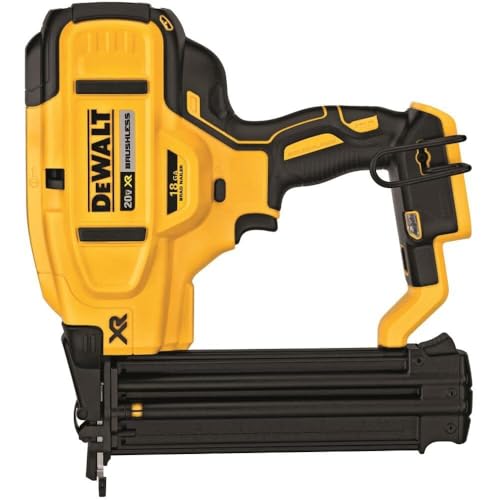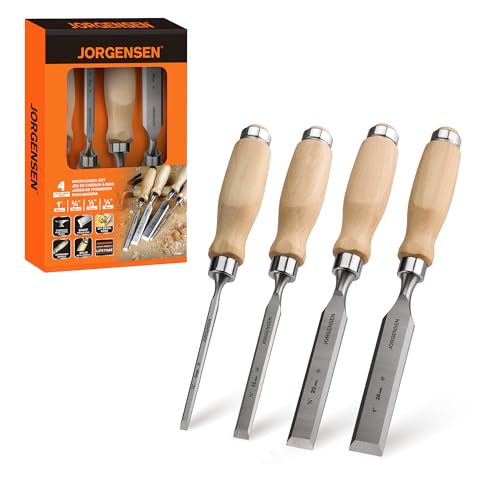When you’re new to woodworking, some tools look like they belong in a horror movie.
Spinning blades, loud motors, and sharp edges can make even the bravest beginner nervous.
The truth? With the right habits, these “dangerous” tools are often the safest and most reliable in your shop.
Here’s how to turn fear into confidence — one tool at a time.
1. Table Saw

The spinning blade and stories about kickback make this the most intimidating tool for beginners.
But with the right setup and safe habits, it’s one of the most precise and dependable tools in the shop.
A push stick or block, proper blade height, and keeping the fence parallel go a long way in preventing accidents.
Most table saw injuries happen when safety techniques are ignored or cuts are rushed.
Hazard:
Kickback can send a board flying back at you, and contact with the blade can cause serious injury.
Watch out for:
- Do not stand directly behind the blade — it puts you in the path of kickback.
- Do not remove safety guards without a valid reason — it increases your exposure to the blade.
- Do not cut without a riving knife or splitter — it raises the chance of the wood binding.
- Do not push wood through without a push stick — it risks your hands getting too close to the blade.
| Preview | Product | Price | |
|---|---|---|---|

|
SKIL 15 Amp 10 Inch Portable Jobsite Table Saw… | $279.00 | Buy On Amazon |
2. Router

The loud whine of a router can make it feel unpredictable before you even start.
Add in its tendency to grab the workpiece if fed the wrong way, and it’s easy to see why beginners hesitate to use it.
Clamping your work securely and feeding against the bit’s rotation make it far more controlled and predictable.
Many router accidents happen when the tool is freehanded or the feed direction is wrong.
Hazard:
The bit can catch and throw the workpiece, and fine dust from routing can irritate your lungs or eyes.
Watch out for:
- Do not feed the workpiece in the same direction as the bit’s rotation — it can cause loss of control.
- Do not operate without securing your work — it increases the chance of kickback or shifting.
- Do not work without eye, ear, and respiratory protection — dust and debris can cause lasting damage.
- Do not start or stop the router while the bit is in contact with the work — it can cause a sudden grab.
| Preview | Product | Price | |
|---|---|---|---|

|
BOSCH PR20EVS Colt 1.0 HP Variable-Speed Palm… | $89.00 | Buy On Amazon |
3. Nail Gun
The speed and power of a nail gun can be intimidating, especially for beginners who aren’t used to tools that fire fast.
While they’re efficient, nail guns can cause serious injuries if aimed carelessly or fired without checking what’s behind the workpiece.
Keeping the muzzle pressed firmly against the material and keeping your hands clear of the firing path greatly reduces the risk.
Most nail gun accidents happen when the user bypasses safety mechanisms or fires without proper positioning.
Hazard:
A misfired nail can pierce skin, hit bone, or pass completely through a workpiece into something — or someone — behind it.
Watch out for:
- Do not disable or bypass the safety tip — it’s there to prevent accidental firing.
- Do not place your free hand or body parts near the nail’s exit path — even if you think the nail won’t go through.
- Do not fire without checking behind the workpiece — nails can travel farther than expected.
- Do not “bump fire” unless you’re experienced — it increases the risk of missed shots and accidents.
| Preview | Product | Price | |
|---|---|---|---|

|
DEWALT DCN680B 20V MAX* XR® 18 GA Cordless Brad… | $247.99 | Buy On Amazon |
4. Circular Saw

The portability of a circular saw makes it handy, but its exposed blade and kickback risk make many beginners nervous.
It’s easy to lose control if the blade binds, especially when cutting without proper support for the workpiece.
Using sharp blades, steady pressure, and correct support for both sides of the cut can make this tool far safer.
Most circular saw injuries happen when cuts are rushed or the blade is pinched mid-cut.
Hazard:
Kickback can cause the saw to lurch toward you, and contact with the spinning blade can cause severe cuts.
Watch out for:
- Do not cut without supporting the workpiece on both sides — it can pinch the blade and cause kickback.
- Do not start the saw with the blade in contact with the material — it can jump unexpectedly.
- Do not operate without keeping both hands on the saw — loss of control happens fast.
- Do not ignore blade guards — they protect you when setting the saw down or during kickback.
| Preview | Product | Price | |
|---|---|---|---|

|
Skil 5080-01 13-Amp 7-1/4″ Circular Saw, Red | $39.99 | Buy On Amazon |
5. Miter Saw

The large, spinning blade dropping down toward your hands can make a miter saw look far more dangerous than it actually is.
With proper positioning and safe habits, it’s one of the most controlled and accurate cutting tools you can use.
Keeping hands outside the marked safety zones and letting the blade reach full speed before cutting greatly reduces the risk.
Most miter saw injuries happen when the workpiece isn’t secured or hands are too close to the blade path.
Hazard:
The blade can cause severe injury if hands cross into the cutting zone, and unsecured workpieces can shift unexpectedly.
Watch out for:
- Do not place your hands inside the marked safety zones — it puts them too close to the blade.
- Do not cut without clamping or holding the workpiece firmly — it can twist or kick up.
- Do not start cutting before the blade reaches full speed — it can grab and pull the work.
- Do not lift the saw while the blade is still spinning — it can catch on the workpiece and kick.
| Preview | Product | Price | |
|---|---|---|---|

|
Metabo HPT 10-Inch Compound Miter Saw, 15-Amp… | $130.90 | Buy On Amazon |
6. Chisels

They might look harmless compared to power tools, but a sharp chisel can cause serious injury in an instant.
A slip in the wrong direction can send the edge straight into your hand or leg.
Keeping your hands behind the cutting edge and working on a stable surface makes them far safer to use.
Most chisel injuries happen when pushing toward yourself or working with a dull blade that requires extra force.
Hazard:
Deep cuts can happen quickly, and infection risk is higher from woodworking tools due to bacteria in the wood.
Watch out for:
- Do not push the chisel toward your body — it can slip and cause a serious cut.
- Do not work with a dull chisel — it requires more force and is harder to control.
- Do not hold the workpiece in your lap — it increases the chance of the chisel slipping into your leg.
- Do not skip a secure clamping method — movement in the workpiece can throw off your control.
| Preview | Product | Price | |
|---|---|---|---|

|
Jorgensen 4-Piece Wood Chisel Set, Chromium Alloy… | $39.99 | Buy On Amazon |
7. Drill Press

The spinning bit and moving quill can look intimidating, but the drill press is actually one of the safest power tools when used correctly.
The danger comes when the bit grabs the workpiece or loose clothing gets caught in the moving parts.
Securing your material and keeping your workspace clear greatly reduces the risk.
Most drill press injuries happen when the workpiece isn’t clamped or the operator leans in too close.
Hazard:
A grabbed workpiece can spin unexpectedly, causing injury to hands, wrists, or arms. Loose clothing or hair can also be pulled into the machine.
Watch out for:
- Do not drill without clamping the workpiece — it can spin out of control.
- Do not wear loose sleeves, gloves, or jewelry — they can get caught in the moving parts.
- Do not hold the material with your hands while drilling — it risks severe injury if the bit grabs.
- Do not lean in close to watch the cut — it increases the chance of contact with moving parts.
| Preview | Product | Price | |
|---|---|---|---|

|
WEN 4208T 2.3-Amp 8-Inch 5-Speed Cast Iron… | $102.77 | Buy On Amazon |
Conclusion
Feeling nervous about certain tools is completely normal — especially when you’re starting out.
The key is learning how each one works, respecting the risks, and practicing safe habits until they feel second nature.
Confidence in woodworking doesn’t come from avoiding the scary tools — it comes from using them the right way.
Which of these tools do you still feel uneasy about?
Last update on 2025-11-15 / Affiliate links / Images from Amazon Product Advertising API
